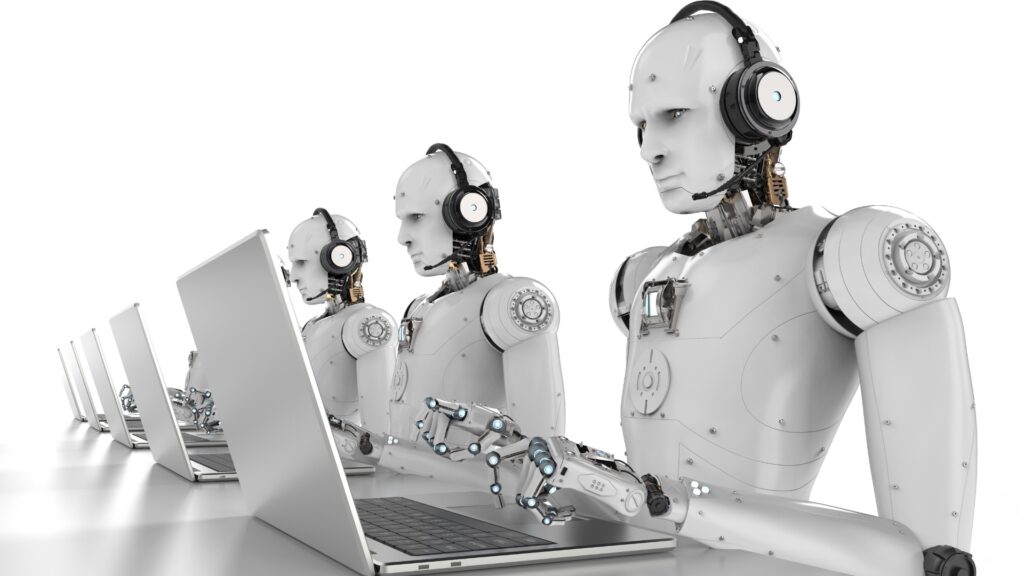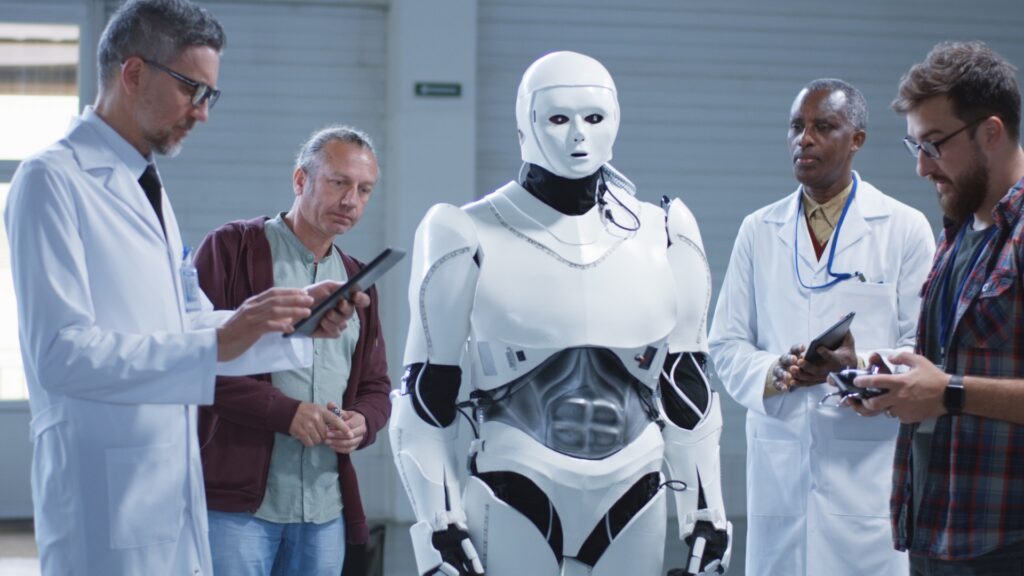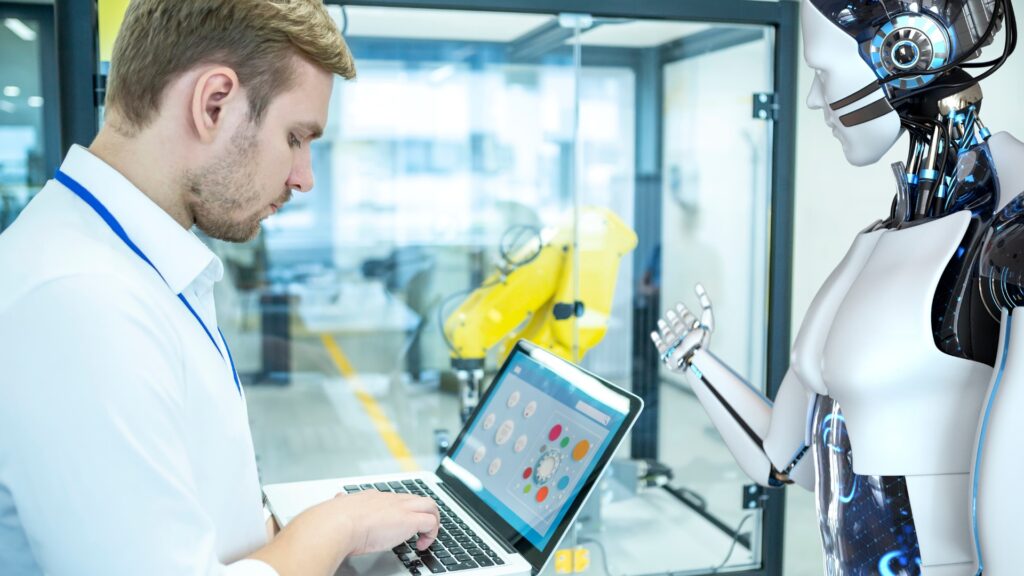Top 8 Humanoid Robots Revolutionising Workplaces and Their Powerful Impact

The Rise of Humanoid Robots
In the rapidly evolving landscape of automation and artificial intelligence, humanoid robots have emerged as cutting-edge innovations with the potential to revolutionise various industries. These humanoid robots possess advanced capabilities that enable them to perform a wide range of tasks previously reserved for humans. From manufacturing to healthcare, their integration into the labour market promises increased efficiency, precision, and productivity. Let’s delve into the top eight humanoid robots and the skills they offer to the labour market, along with their implications and limitations.

The Top 8 Humanoid Robots and their impact on workplaces
- Skills Offered: Atlas is a versatile humanoid robot capable of traversing rough terrain, manipulating objects, and performing tasks in dynamic environments. Its advanced mobility and dexterity make it suitable for tasks such as construction, disaster response, and logistics.
- Job Functions: Atlas can take on roles in construction sites, warehouses, and disaster zones, where its agility and strength are invaluable. It can assist with heavy lifting, assembly tasks, and even search and rescue operations.
- Limitations: Despite its remarkable capabilities, Atlas still faces challenges in complex decision-making and adapting to unpredictable environments. Additionally, its high cost of development and maintenance may limit widespread adoption.
2. Pepper by SoftBank Robotics:
- Skills Offered: Pepper is designed to interact with humans, recognise emotions, and engage in conversations. With its natural language processing and facial recognition capabilities, Pepper excels in customer service and assistance roles.
- Job Functions: Pepper finds applications in retail stores, hospitality, and healthcare settings, where it can greet customers, provide information, and even offer emotional support. Its ability to enhance customer experiences makes it a valuable asset in service-oriented industries.
- Limitations: While Pepper’s social interaction skills are impressive, it still lacks the depth of understanding and empathy that humans possess. It may struggle to handle complex inquiries or situations requiring nuanced emotional responses.
- Skills Offered: Sophia is an AI-based humanoid robot renowned for its lifelike appearance and conversational abilities. It can hold conversations, recognise faces, and express emotions, blurring the lines between human and machine interaction.
- Job Functions: Sophia’s potential spans various sectors, including education, healthcare, and entertainment. It can serve as a companion for the elderly, assist in therapy sessions, or even deliver presentations and speeches.
- Limitations: Despite its advancements, Sophia’s capabilities are still limited compared to human cognition. Its responses are pre-programmed or based on pattern recognition, which may result in occasional inaccuracies or misunderstandings.
- Skills Offered: NAO is a small humanoid robot designed for education and research purposes. It boasts capabilities such as speech recognition, motion sensing, and programmable behaviors.
- Job Functions: NAO finds applications in education settings, where it can assist teachers in delivering lessons, engaging students, and facilitating interactive learning experiences. It can also be used for research in human-robot interaction and cognitive development.
- Limitations: While NAO is well-suited for educational environments, its limited physical capabilities may restrict its usefulness in industries requiring heavy lifting or intricate manipulation tasks.
- Skills Offered: ASIMO is a humanoid robot known for its advanced mobility and coordination. It can walk, run, climb stairs, and navigate complex environments with ease.
- Job Functions: ASIMO’s agility and mobility make it suitable for roles in manufacturing, maintenance, and healthcare. It can assist with tasks such as inventory management, facility inspection, and patient care in hospitals.
- Limitations: Despite its impressive locomotion abilities, ASIMO lacks the manipulative dexterity of other humanoid robots, limiting its application in tasks requiring fine motor skills or precise manipulation.
- Skills Offered: TALOS is a humanoid robot designed for industrial applications, equipped with strength, agility, and advanced sensing capabilities. It can perform tasks in hazardous environments, such as welding, inspection, and maintenance.
- Job Functions: TALOS is well-suited for roles in heavy industries, construction sites, and hazardous environments where human safety is a concern. Its ability to operate in extreme conditions makes it invaluable for tasks that pose risks to human workers.
- Limitations: While TALOS enhances safety and efficiency in hazardous environments, its high cost and specialised nature may limit its adoption to specific industries with critical safety requirements.
7. Baxter by Rethink Robotics:
- Skills Offered: Baxter is a collaborative robot designed to work alongside humans in manufacturing and assembly tasks. It possesses adaptive capabilities, allowing it to learn and perform a variety of tasks with minimal programming.
- Job Functions: Baxter can handle repetitive tasks on assembly lines, such as picking, packing, and sorting, freeing up human workers for more complex and value-added activities. Its versatility and ease of programming make it suitable for small and medium-sized enterprises.
- Limitations: While Baxter excels in repetitive tasks, its speed and precision may not match those of specialised industrial robots. Additionally, its collaborative nature requires careful integration into existing workflows to ensure safety and efficiency.
- Skills Offered: UR3 is a lightweight, flexible robot arm designed for collaborative tasks in various industries. It offers precision, agility, and ease of programming, making it adaptable to diverse applications.
- Job Functions: UR3 can be deployed in industries such as electronics, healthcare, and laboratories, where it assists with tasks such as assembly, testing, and material handling. Its small footprint and user-friendly interface make it accessible to a wide range of users.
- Limitations: While UR3 enhances productivity and flexibility in collaborative environments, its payload and reach limitations may restrict its suitability for certain heavy-duty or large-scale applications.

The integration of humanoid robots into the labour market presents both opportunities and challenges for the future workforce. While these robots offer increased efficiency, productivity, and safety in various industries, they also raise concerns about job displacement and the need for upskilling and retraining. As organisations navigate this technological shift, it’s essential to consider the ethical, social, and economic implications of humanoid robot deployment, ensuring a balance between automation and human involvement in the workforce. Embracing these advancements responsibly can lead to a future where humans and robots collaborate harmoniously, leveraging each other’s strengths to drive innovation and progress.
If your organisation is interested in how to integrate Humanoid Robots into your daily operation contact our team for more information today : [email protected].
To watch an intro video, with an extract from a white paper on successfully integrating Humanoid Robots advancing technology, click here.
Recent Posts
- Unilever Focusses on the Power of Purpose: 🌍 YPP Spotlight 8 July 2025
- Corporations Fit For The Future: Three Women. One Mission. 5 July 2025
- KPMG’s Wellbeing Blueprint: 🌍 YPP Spotlight 30 June 2025
- Microsoft’s Culture Of Inclusive Allyship Leads The Way: 🌍 YPP Spotlight 24 June 2025
- How remote-first tech powerhouse, Atlassian, strives to build a Global Culture of Care, one Wellness Day at a time 16 June 2025